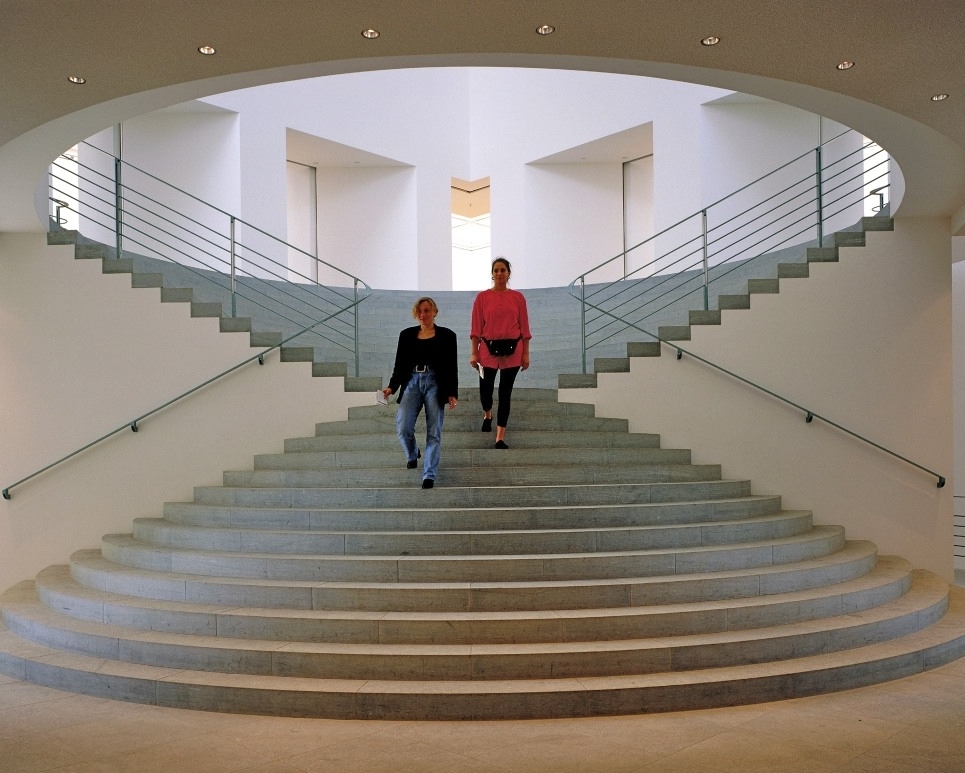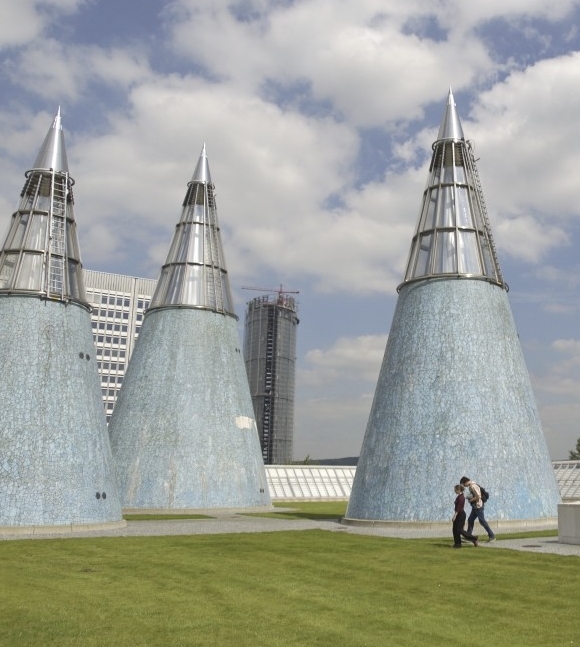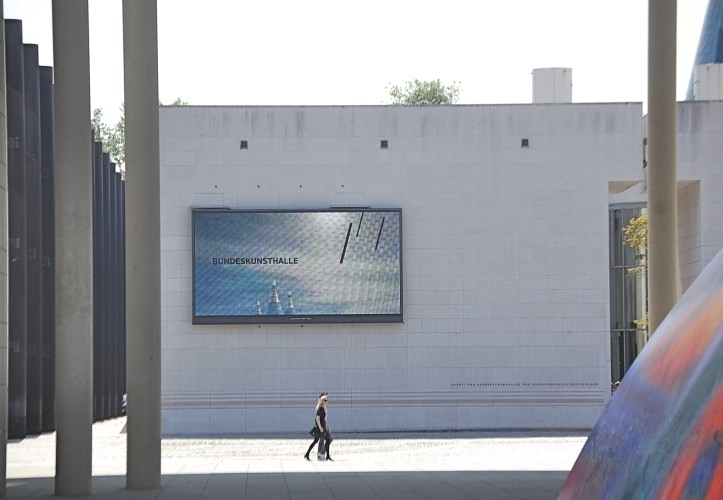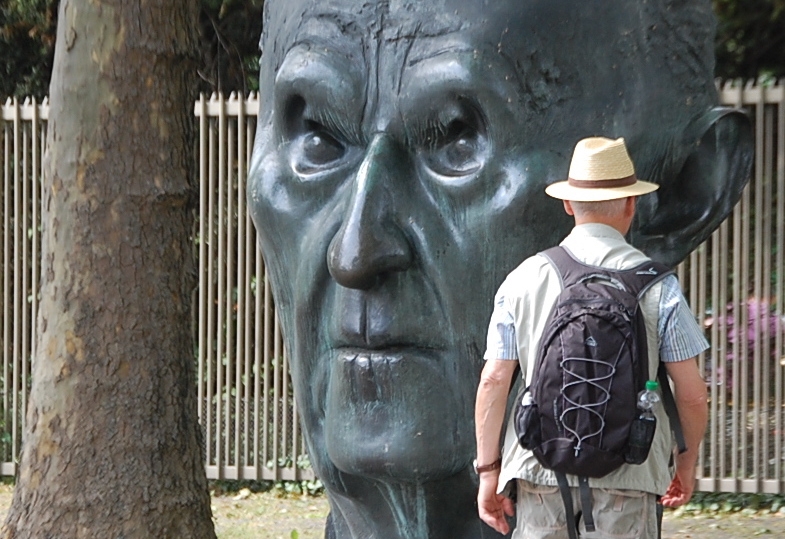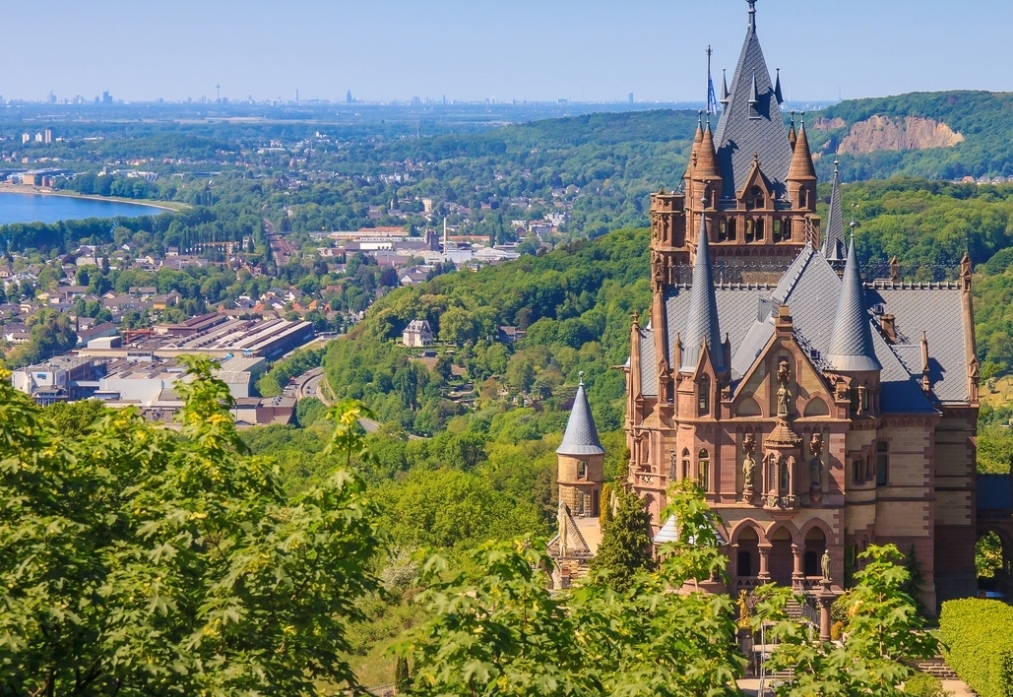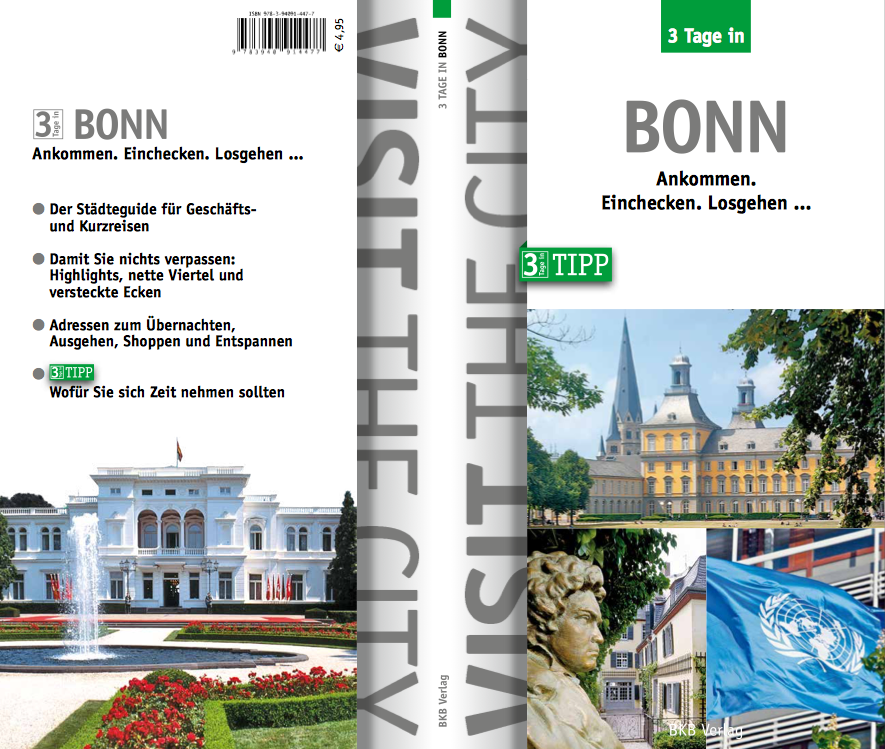BONN – THE FEDERAL CITY ON THE RHINE
THE BKB TRAVEL GUIDE “3 DAYS IN BONN”
You will find detailed information for preparing and enjoying your trip to Berlin in our guidebook “3 Days in Bonn”. Compact, easy to use and informative! A programme for three days, a city plan, special tips and addresses. We show you the highlights, the pleasant districts, take a break with you, and tell stories … just as much as you need for three days! “3 Days in Bonn” is available as a paperback from your bookstore or from the BKB shop, where you can also buy it as an ebook!
Order the travel book “3 Days in Bonn” as paperback or e-book right here in the BKB Shop or in your bookstore!
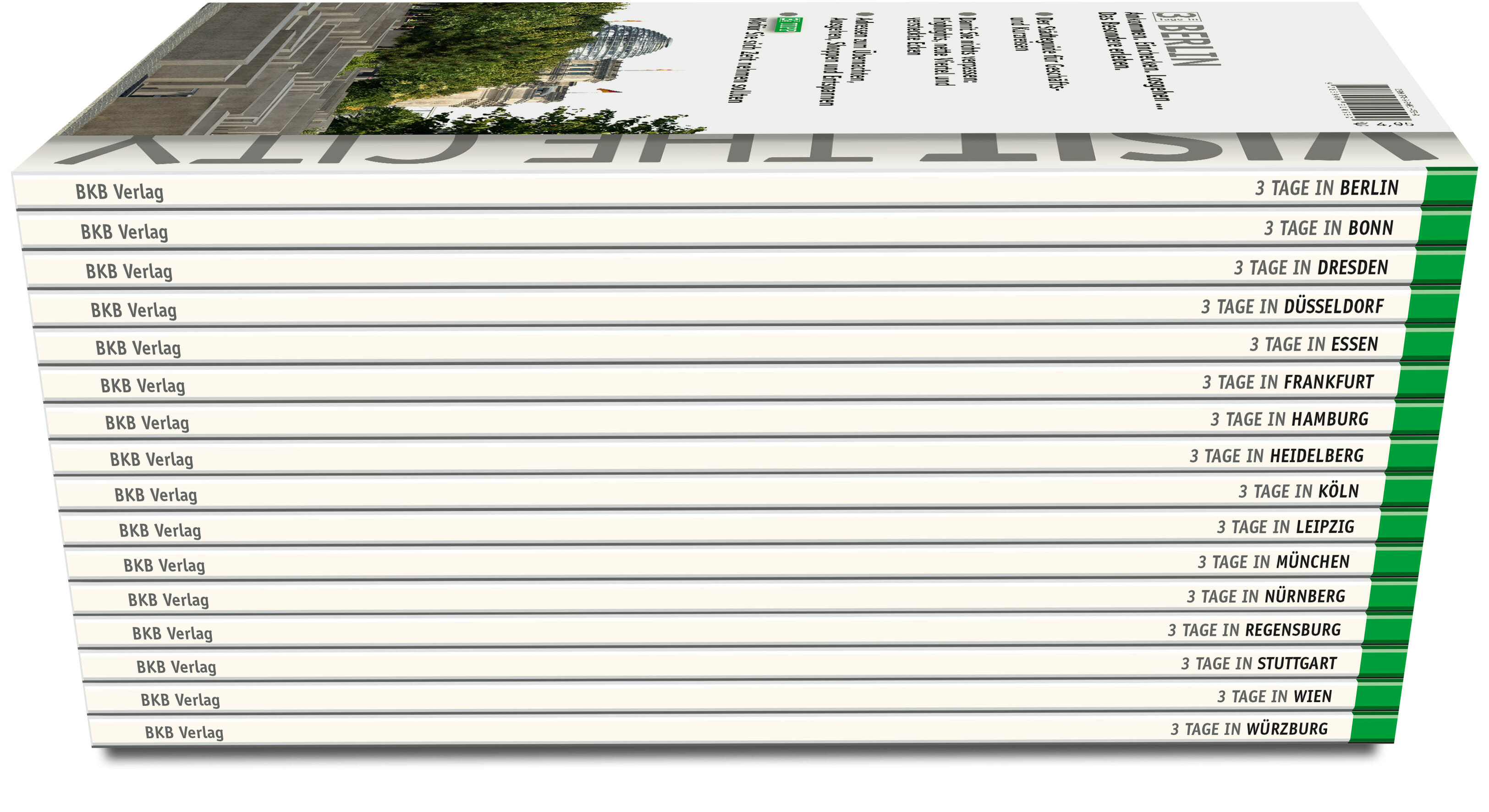
The travel guide “3 Days in ” is available in german or english language in the BKB Shop or in your bookstore!
The texts and images on our website are to help you get your bearings and plan your trip to Bonn. All the information has been carefully checked by the 3-Days-in editorial team and they are continually updated. Nevertheless, it is possible that some details are incomplete or out of date. We are therefore grateful for every correction or addition to our information. Please send your hints to: info@3-tage-in.de
TIPS FROM THE VISIT-THE-CITY EDITORS FOR YOUR 3-DAY-TRIP TO BONN
The city where Beethoven was born and the Federal Republic of Germany began is today a lively and cosmopolitan city, the seat of various UN organizations and an important center of science. More than 2,000 years of history have left their mark on the city and everyone, whether Roman, archbishop, merchant or parliamentarian, has left their mark. In addition to the contemporary architectural witnesses, the Museum Mile and the numerous events are a special attraction and the many beautiful cafés, bars and restaurants invite you to linger.
BONN DAY 1
On a stroll through the city centre you will get to know two Roman soldiers, learn little-known facts about Bonn’s most famous son, and meet students in the palace of the prince electors. The zest for life of the Rhinelanders can be felt on all sides.
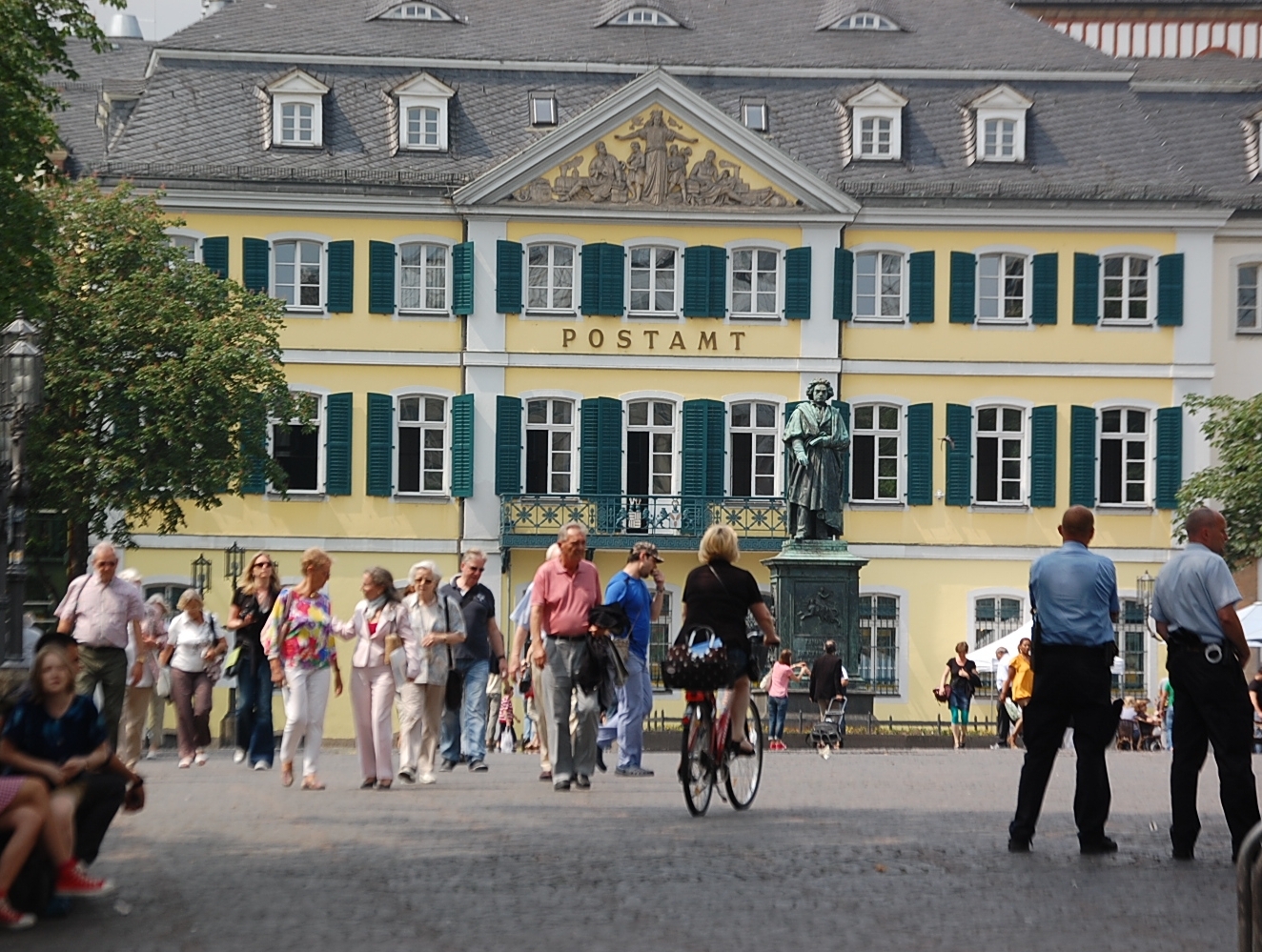
MÜNSTERPLATZ
This walk through the centre starts at Münsterplatz, the square next to the minster, site of a monument to Ludwig van Beethoven. The late Baroque Palais Fürstenberg houses today the main post office minster. In the Middle Ages, courts of law were held on Münsterplatz. This is commemorated by a 2.70-metre-high Roman sandstone column in front of the main entrance. A ball made from trachyte stone, symbolising the globe and representing the ruler’s power to dispense justice, tops the column. A broken-off iron plug halfway up shows that sentenced criminals were chained to the column, which served as a pillory where bystanders mocked them.
THE MINSTER
With the tall spire over its crossing, topping one of its five towers, the minster dominates the city skyline and is Bonn’s landmark, and has been part of the city seal since the 13th century. The church is dedicated to Saints Cassius and Florentius, two Roman soldiers who died during persecutions of Christians in the 3rd century. A small, late Roman building, constructed in their honour over the tomb, evolved by the year 1248, the date when the foundation stone of the cathedral in nearby Cologne was laid, into a crossshaped basilica, one of the finest and largest churches in the Rhineland.
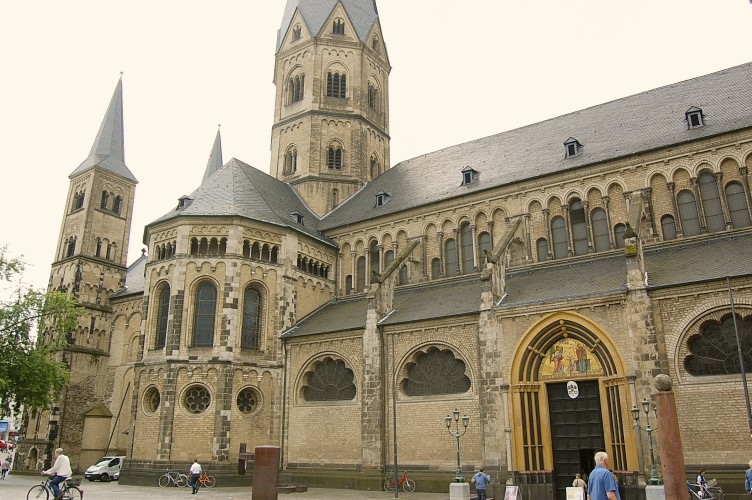
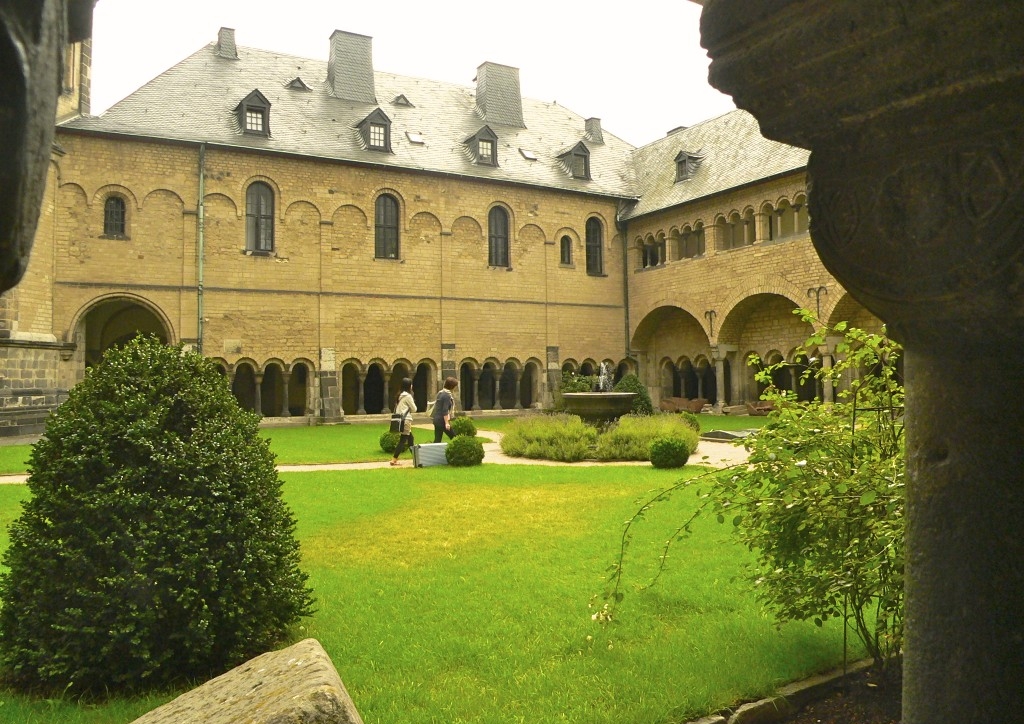
A BEAUTIFUL PLACE OF SILENCE
Don’t miss the Romanesque cloister. It leads to one of the most beautiful spots in Bonn, listed as one of the “1000 places to see before you die”. This wonderful haven of peace was built in the mid-12th century by the dean, Gerhard von der Aue, along with the two-storey collegiate building. On the three surviving wings of the cloister, note the elaborately decorated capitals with flower-like decoration.
“Star Gate”
Next, walk along Vivatsgasse to the “Star Gate”, Sterntor, a reminder of the medieval town fortifications that once existed here. To allow the traffic to flow better, in 1898 the gate at the end of Sternstrasse, the entrance to Bonn for goods coming from Aachen, was demolished and this replacement gate was constructed only a few metres away using remnants of the old town wall. Two sculptures are visible on the gate: a late Gothic group of the crucified Christ with Mary and St John, and the Virgin of the Seven Sorrows, dating from 1650.
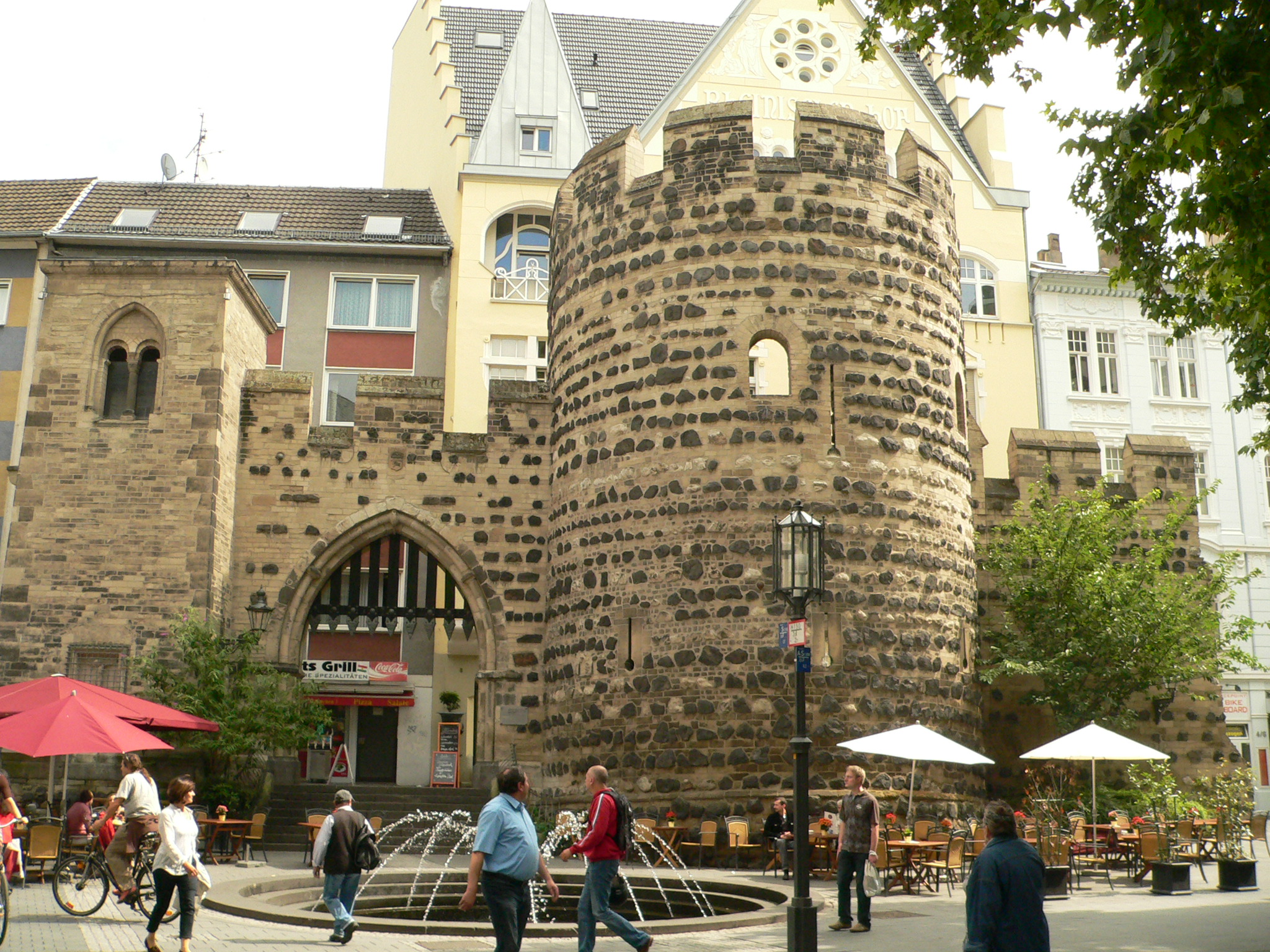
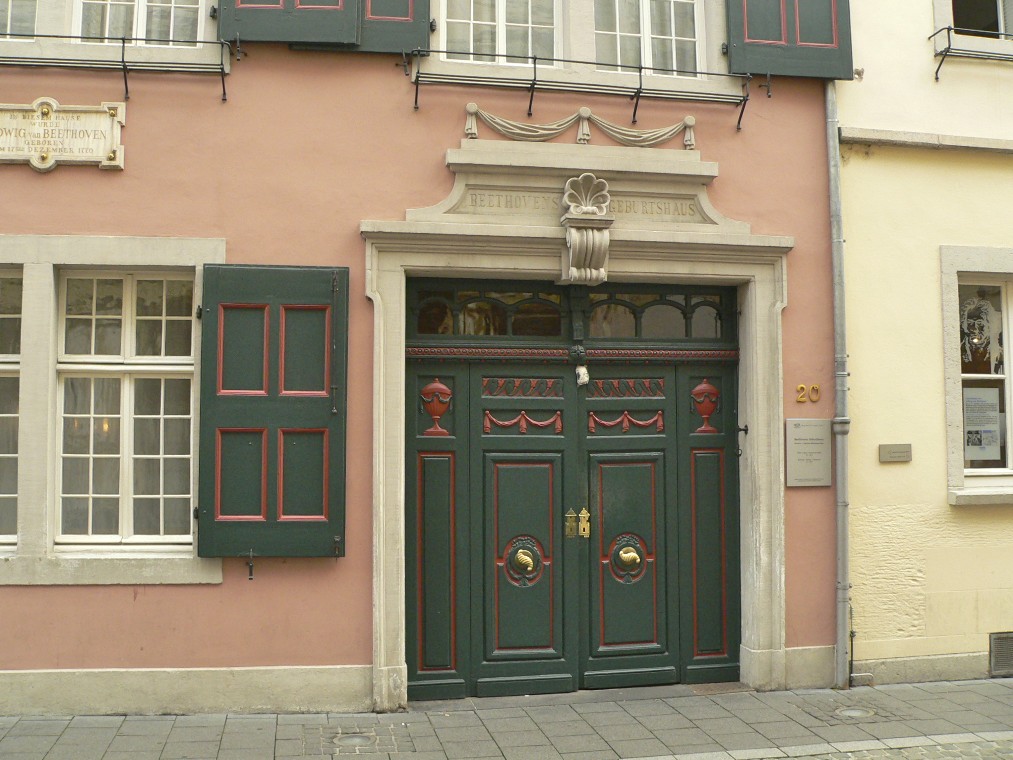

BEETHOVEN- HOUSE
The house where the composer was born in Bonngasse became a place of memorial that documents the composer’s life and work in what is now the world’s largest Beethoven collection. Here you can find out how the young Beethoven lived, following the stages of a career that took him to the Viennese Classicalstyle and made him a forerunner of Romantic music. You can learn about the people who surrounded and influenced him, and hear the impact that his compositions made on the history of music. Don’t fail to pay a visit to the studio with digital resources in the neighbouring building, reached through the sculpture court. The studio takes you on an interactive journey of discovery though Beethoven’s legacy. You can listen to his works in recordings made by the Deutsche Grammophon Gesellschaft, see a reconstruction of his last dwelling in Vienna, and listen to a reading from Beethoven’s letters. For a completely different kind of musical experience, take a look at the project for visualising music in the historic vaulted cellar. It combines traditional and experimental means of expression, interactively presenting two selected compositions – Fidelio and Presto 126/4 – in a space with sound and 3D-graphics systems.
DOWNTOWN
Sternstrasse, the street of bakers in the Middle Ages and now a popular shopping street, leads to the centre of the city, the Marktplatz. The unusual, almost triangular shape of this marketplace arose from its location at the meeting point of several old trade routes. The market fountain at the centre takes the form of a richly adorned obelisk, which the citizens erected at their own expense, on the instructions of Prince Elector Maximilian Friedrich, following a great fire in 1777. To make the most of these splendid historic surroundings,stroll between the vegetable stalls on the market before taking a seat at one of the many cafés.

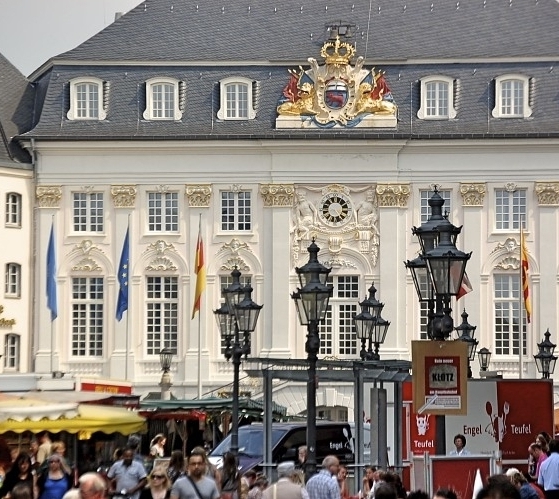
OLD TOWN HALL
Both an eye-catcher and an emblem of the city, the Old Town Hall with its opulent Rococo façade stands on the broad east side of the marketplace. Prince Elector Clemens August personally laid its foundation stone in 1737 – the two golden lions, the electors’ herald icanimals, on the mansard roof are a reference to this. Be sure to walk up the double-flight steps with their gilded railings, which have been the scene of historic events. The first president of the Federal Republic of Germany, Theodor Heuss, addressed the citizens from here in 1949. Speeches were made here in 1962 by Charles de Gaulle on this spot and a year later by John F. Kennedy, and the Soviet head of state Mikhail Gorbachev was greeted with cheers
ELECTORS PALACE & UNIVERSITY CAMPUS
The next stop is the Kurfürstliches Schloss, for centuries a residence of the Prince Electors of Cologne and today the main building of the university. This castle-like complex of four wings, crowned by towers and enclosing several courtyards, was built between 1697 and 1705 by Enrico Zuccali, the court architect in Munich. Almost 20 years later it was extended to the south and the Baroque Hofgarten was laid out – a park that made history when Bonn was the federal capital, and many anti-government demonstrations were held here. Today its location makes it a popular park among the students.
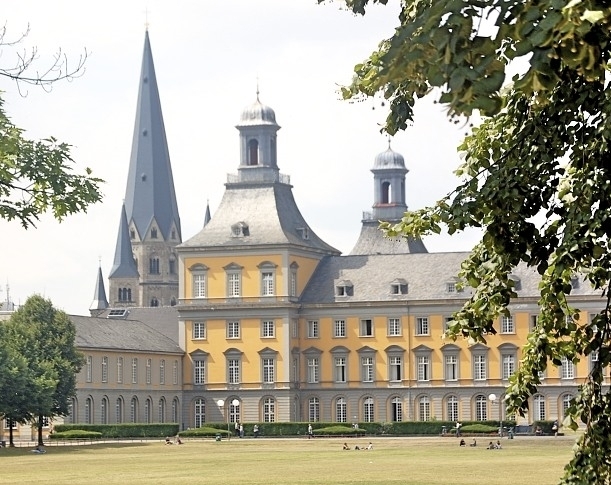
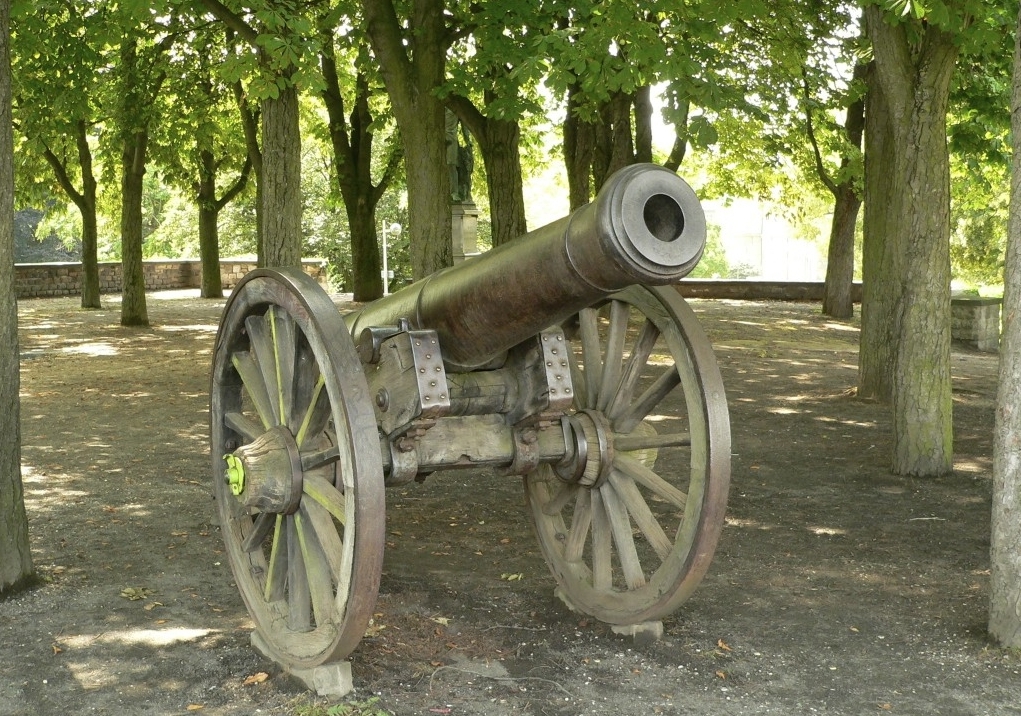
OLD CUSTOMS PLACE
The last stop on this city stroll is the old customs station for collecting tolls from Rhine trade, which stood on a bastion at the corner of Bonn’s city walls. Today this terrace with its shady chestnut trees and a bronze monument to the poet Ernst-Moritz Arndt is worth visiting for a wonderful view over the Rhine to the Siebengebirge hills. The temple gateway at the foot of the Alter Zoll is a work of homage to Heinrich Heine by the artist Ulrich Rückriem.
BONN AT NIGHT
If you are looking forward to a cultural evening, Bonn has a wide range of offerings. With opera, concerts by the Beethoven-Orchester and the Klassische Philharmonie, as well as jazz, rock and pop concerts, Bonn lives up to its name as a city of music. Its theatre scene too has much to offer – alongside the municipal ensemble there are many privately run theatres and cabarets, such as the well-known Pantheon and the Haus der Springmaus. The latter is situated in the Kulturmeile (“cultural mile”) of Frongasse in Endenich, where the Harmonie music club, Fiddler‘s Irish Pub for Irish folk music, the Rex cinema, the Robert-Schumann-Haus and the Theater im Ballsaal are to be found.
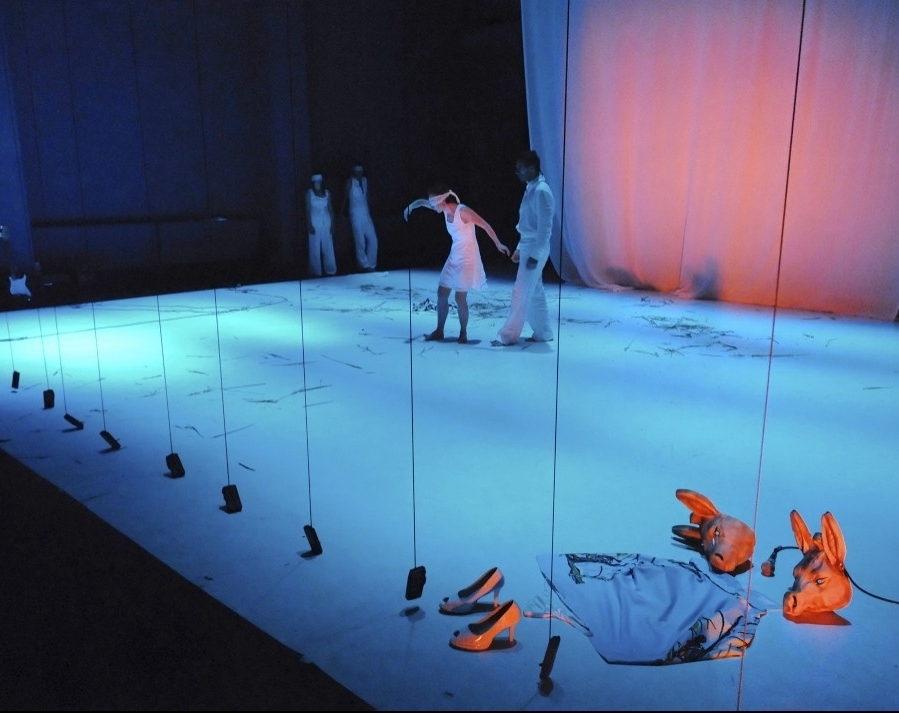
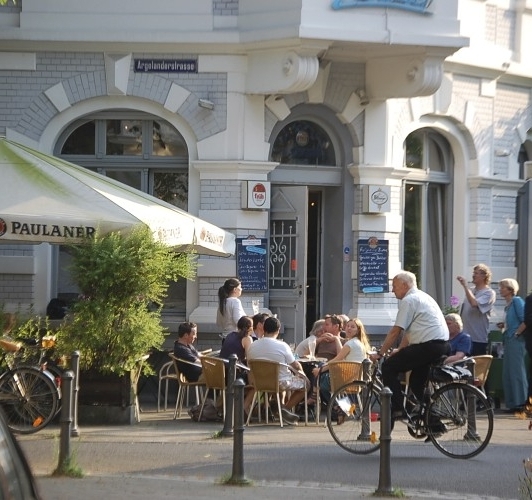
STROLLING THOUGH THE PUBS
For a leisurely pub crawl try the Südstadt, a middle- class district south of the Hofgarten and Poppelsdorfer Allee where many pubs and cafés thrive. Walk a little further to Poppelsdorf, where you will find a lively pub scene behind the Botanical Garden along Clemens-August-Strasse. Less mainstream is the nightlife in the inner Nordstadt (also called Altstadt), a 100-year-old middle-class and artisan quarter to the north of the city centre. There are many pubs and restaurants in this multicultural district with a Mediterranean atmosphere around Breite Strasse and Heerstrasse. Don’t fail to take a look into the pretty back yards, where a buzzing art scene has moved into artisans’ workshops and factories.
BONN DAY 2
You start with exploring the diversity of species on earth, then you will walk in the historical traces of the Federal Republic, visit buildings of the “provisional” capital and afterwards you will stroll through more than 70 years of German political, economic and social history. Afterwards you can relax while shopping and watch the hustle and bustle in the city centre in one of the many street cafés.
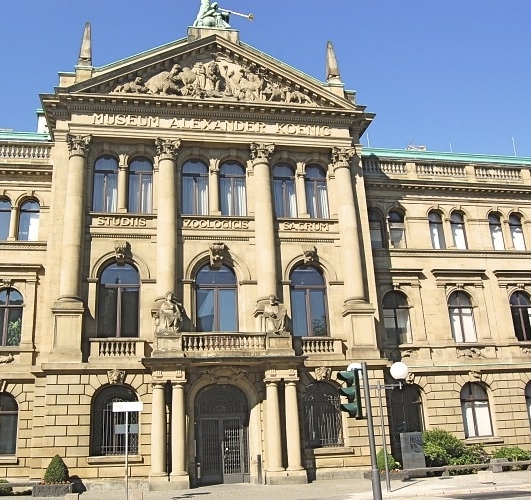
MUSEUM KOENIG
This imposing sandstone building is home to the natural history museum that the zoologist Alexander König founded and handed over to the city of Bonn in 1929. The permanent exhibition Our Blue Planet – Life in the Network is equally fascinating for adults and children. It gives an entertaining explanation of ecological dependencies within and between the most important ecosystems of the earth. At the same time the museum is the starting pointof the Democracy Trail, which leads through the 50-year history of the government quarter and points out the former or current political importance of the buildings there on information boards. After the end of the war, the museum courtyard was the site of a historic event: on 1 September 1948 the Parliamentary Council which wrote the German constitution was established here.
THE OLD CENTRE OF POLITICAL POWER
If you want to see Adenauer’s desk or stand on the terrace of Villa Hammerschmidt, home of the president of the Federal Republic, plan your walk in advance, as many buildings in the government quarter are only open to the public as part of a guided tour.
Information: Bonn-Information, tel. 0172/7718978, and www.bonntouren.de
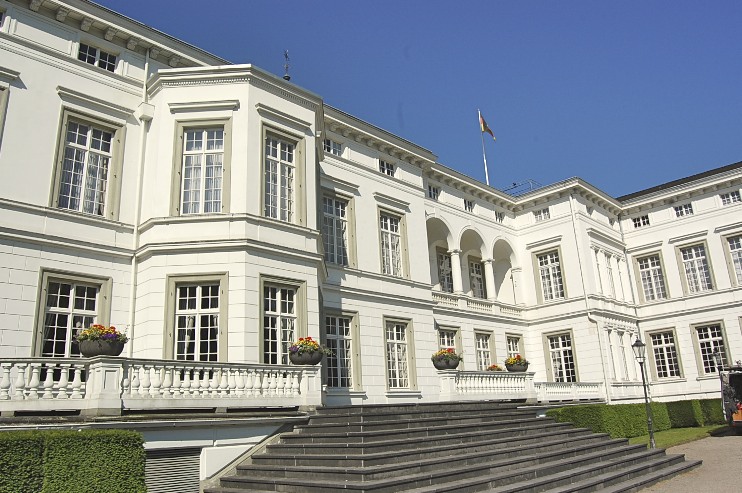
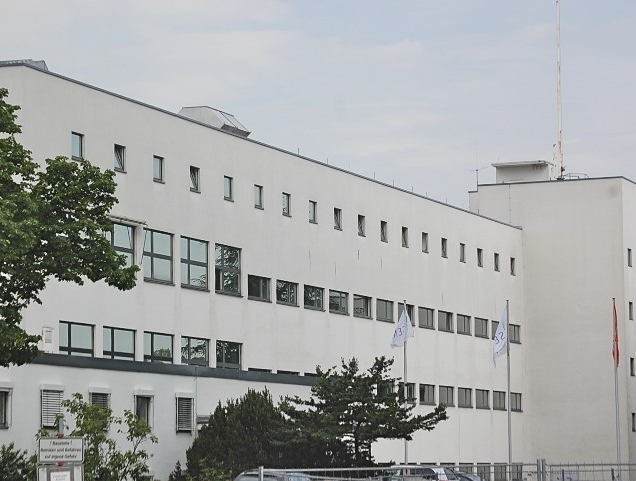
THE OLD GERMAN PARLIAMENT BUILDING
The route continues to a complex of buildings in which the Parliamentary Council was established on 1 September 1948 and passed the Grundgesetz (constitution of the Federal Republic) only eight months later on 23 May 1949. The Bundeshaus started out as a collegefor teachers, constructed in the Bauhaus style in the 1930s. As Bonn wanted to steal a march on its rivals to be capital city, in 1949 the architect Hans Schwippert was commissioned to extend this building, and within a few months the first of many extensions was built: a five-storey north wing for the upper house of parliament (Bundesrat), a three-storey south wing for the lower house (Bundestag), and a plenary chamber measuring 1000 square metres.
LIVING FIRST STEPS TOWARDS DEMOCRACY
Parliament met here for almost 40 years, until in 1986 the Bundestag decided to tear down the decaying plenary chamber and rebuild it to designs by the architect Behnisch. It was completed in 1992, a year after the decision to move the government and parliament to Berlin. Delegates were therefore able to use this prestigious building, with expanses of glass to symbolise democratic openness and transparency, for a short time only. On 1 July 1999 the Deutscher Bundestag sat in Bonn for the last time. Today the building is part of the World Conference Center Bonn. A new feature of the chamber was the arrangement of seating in a circle, so that members of the government and Bundesrat no longer sat opposite the delegates in a raised position, but with them in one circle. The incompleteness of the circle was symbolised by the Bundestag eagle, the so-called “fat hen”, whose feathers were symmetrical but had a gap.


THE PARLIAMENT IN THE OLD WATERWORKS
364 sessions of the Bundestag were held here, including the historic meeting on 20 June 1991 that took the decision to move the parliament and government to Berlin. Those who enter the Wasserwerk, which used to be the pump house of a waterworks built in 1892 and today is part of the World Conference Center Bonn, are surprised at how small it is. However,while the new plenary chamber was being constructed,the location of this waterworks made it extremely suitable as alternative accommodation. Members of parliament were willing to live with the cramped seating, even when space had to be found for 144 new members from the former East Germany after reunification in 1990.
THE RADIO STATION DEUTSCHE WELLE
The Schürmannbau, a building at the foot of the two skyscrapers Langer Eugen and Post-Tower, was originally built as an extension of the building that accommodates members of parliament. Damaged by the floods in 1993, since 2003 it has been the home of Deutsche Welle. This radio and TV station is Germany’s voice in the rest of theworld, broadcasting in over 30 languages via airwave sand internet. Financed entirelyby the government, the aim of Deutsche Welle is to present events and trends in Germany and the world from a German point of view and thus promote understanding between different peoples and cultures.
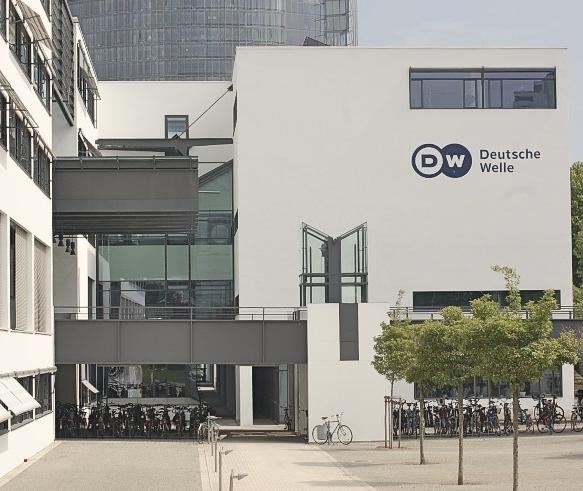
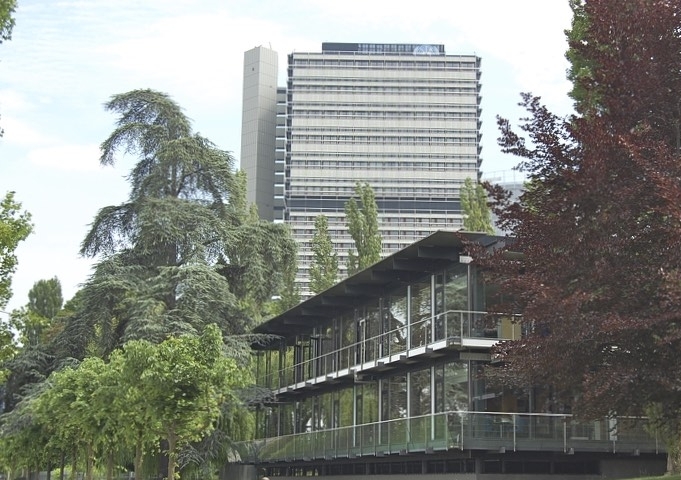
THE BUILDING OF THE DELEGATES
Directly opposite stands the building that was formerly used for members of the Deutscher Bundestag, erected in 1969 to designs by the architect Egon Eiermann and for many years the tallest building in Bonn at 114.70 metres. Its nickname is Langer Eugen (Tall Eugen), a joking reference to the small stature of Eugen Gerstenmeyer, the president of the Bundestag who worked hard to get the 29-storey tower built. Today it is the centre of the UN Campus, as three large blue-and-white illuminated emblems show from a distance.
THE POST TOWER
Visible from afar, the tallest office building in North-Rhine Westphalia with a height of 162.50 meters is a symbol of the transformation of Bonn. This futuristic-looking tower of steel, glass and concrete was built for Deutsche Post DHL in 2002 by the architects Jahn and Murphy. Its ground plan consists of a three-storey base and two slightly displaced elliptical halves, joined together by delicate structures of steel and glass on every ninth floor by a socalled sky garden, a transparent glass surface. After dark the tower makes its mark on the night sky in Bonn thanks to a dynamic light installation by the Breton artist Yann Kersalé.
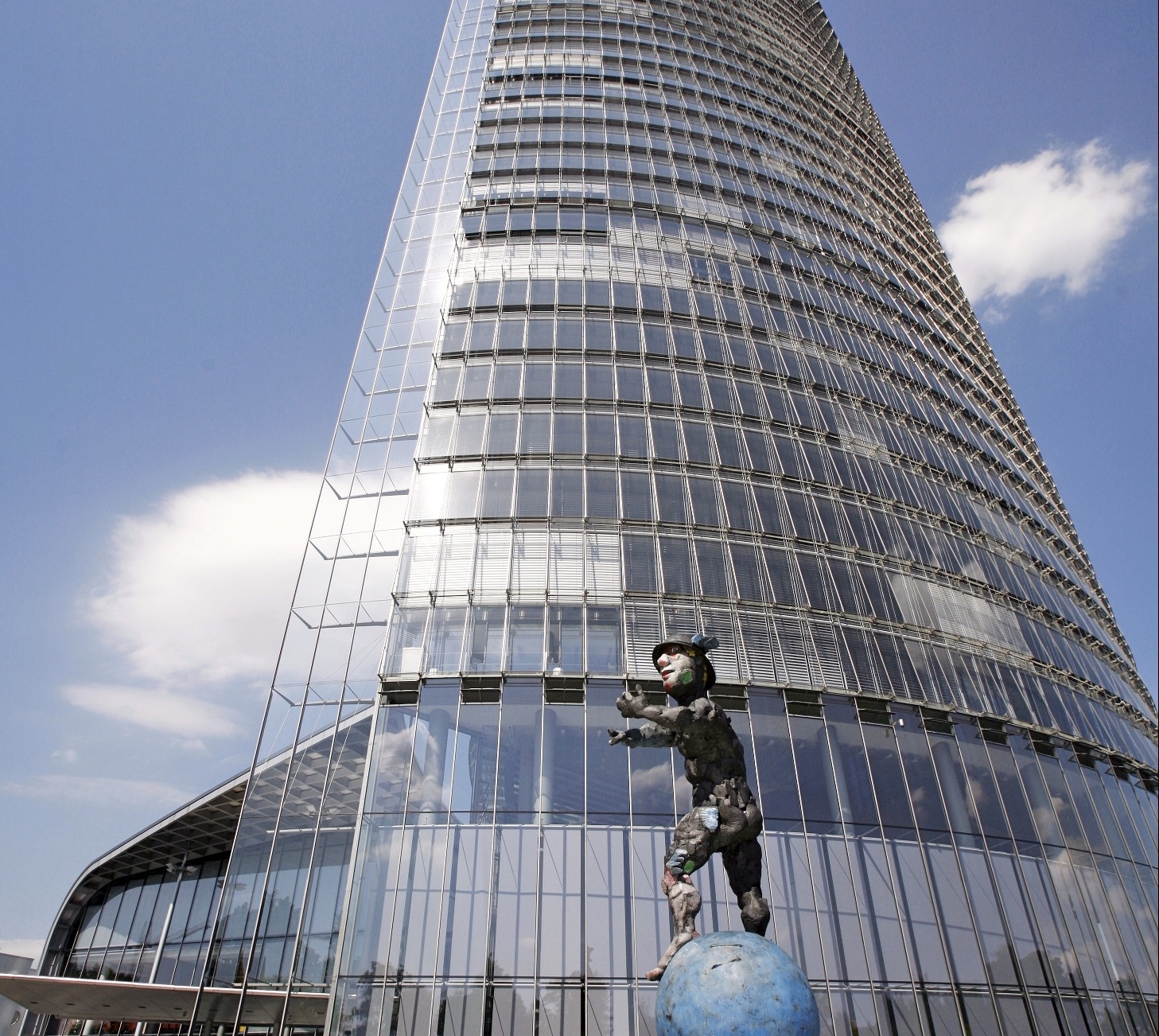
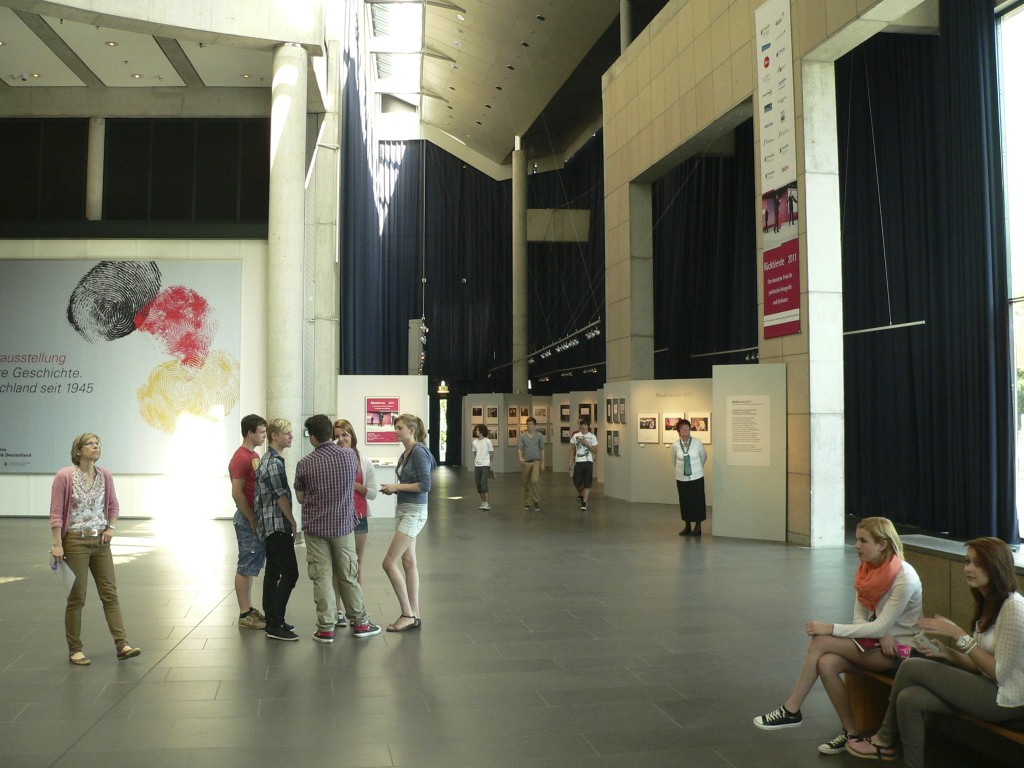
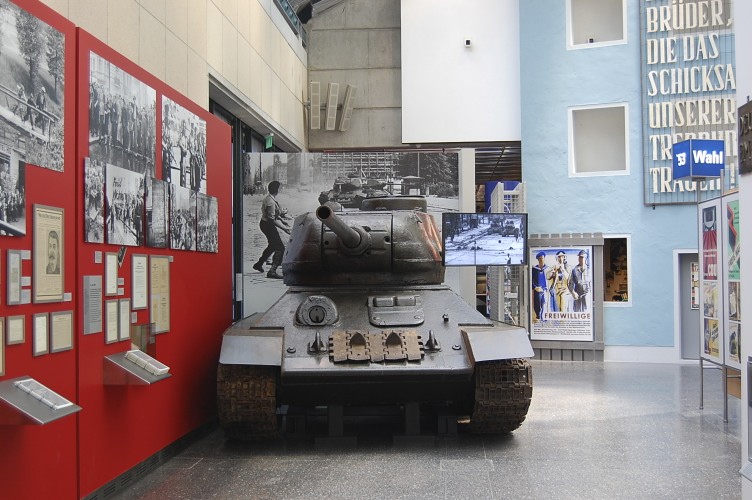
THE MUSEUM OF GERMAN HISTORY
“Liberation and hope for some, defeat, disillusionment and fear for others. The unconditional surrender of the Wehrmacht on 8 May 1945 ended the Second World War, which Germany had unleashed.” This is the starting point of the recent history of Germany which this unique museum brings to life on an area of more than 4000 square metres with over 7000 exhibits and 150 media points. Hardly a single topic is left out. Visitors are invited to sit in a reconstruction of the chamber of the Deutscher Bundestag, as the members of parliament did from 1949 to 1987. A Russian tank is a reference to the Cold War, which is also documented with original stones from the Berlin Wall and a secret camera in a book. Take a seat in a 1950s cinema or an ice-cream parlour with a juke box, exhibits that representthe era of the West German economic miracle in the 1950s and 1960s. Take a look at other historical events such as the building of the Berlin Wall,the student protests in 1968, the first landing of men on the moon in 1969, the award of the Nobel Peace Prize to Willy Brandt in 1971 and the attack on the Olympic Games in 1972 in Munich, or refresh your memory about the new Green Party in the 1970s, the fall of the Wall and German reunification.
STROLLING & SHOPPING
The main area for shopping in Bonn is the city centre between Münsterplatz, Marktplatz and Friedensplatz – one of Germany’s largest uninterrupted pedestrian zones. The narrow streets and little lanes, which open up into squares where you can linger a while, have their own special charm. The shops cater for almost all requirements, as they range from department stores and fashion stores to a great variety of smaller shops, including specialised outlets.
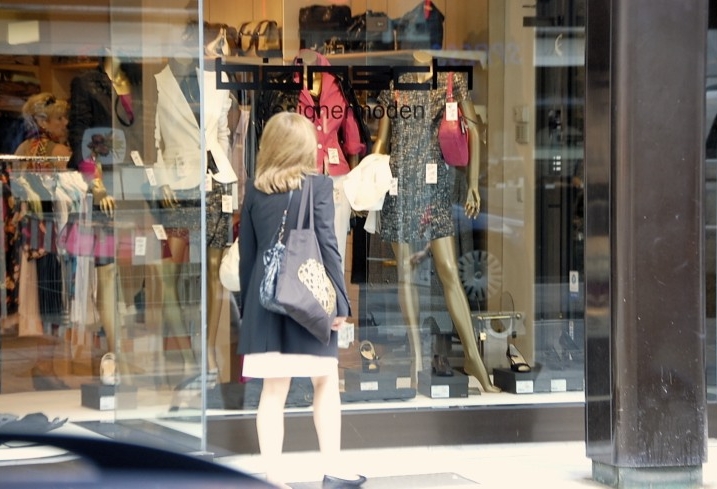
BONN DAY 3
To experience Bonn from the water is something special, as the city is the “gateway to the romantic Rhine”. And later on you will go to the Museum Mile, where you can choose between an exciting exhibition in the Art and Exhibition Hall, contemporary research and technology in the Deutsches Museum and Rhineland Expressionists or art after 1945.
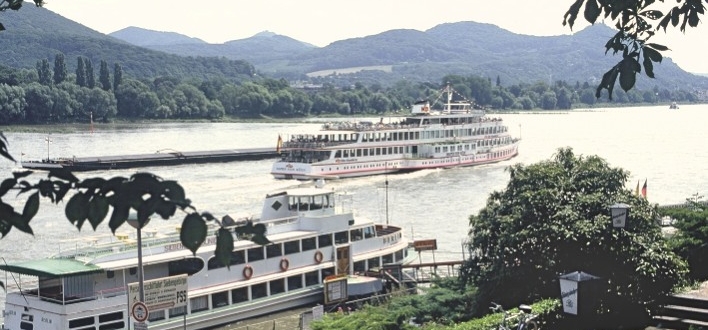
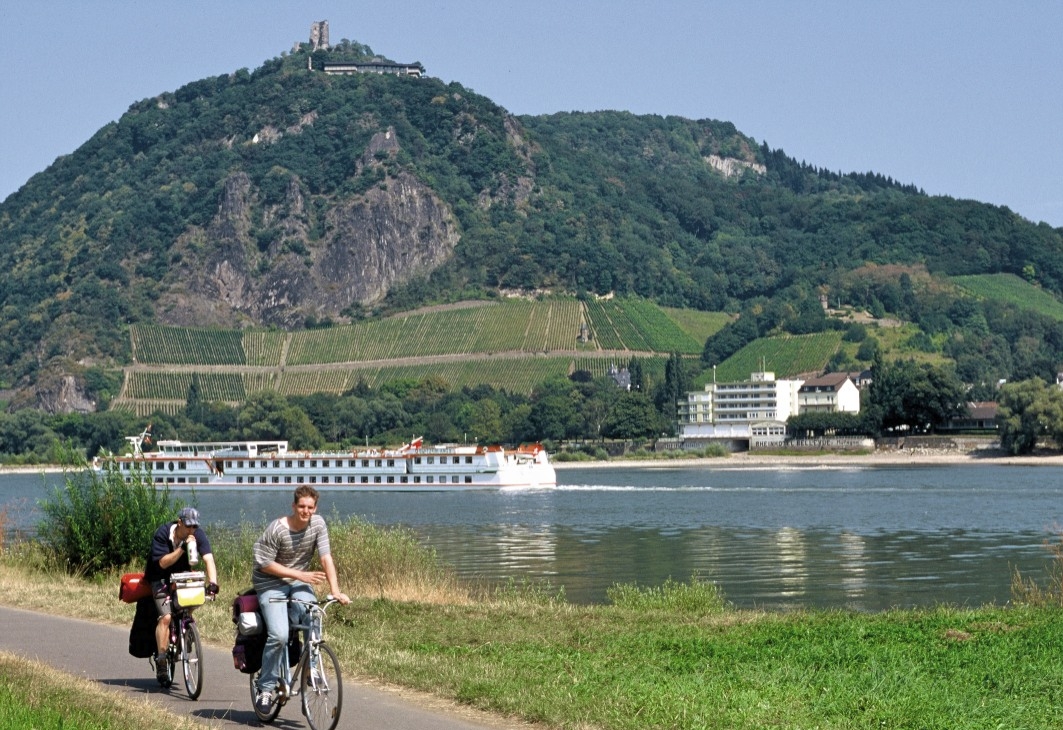
A BOAT TRIP ON THE RHINE
For the fabled Siebengebirge hills and Drachenfels, the Roland Arch, the piers of the famous bridge in Remagen and the half-timbered town of Linz, a trip on the Rhine is an essential part of a visit to Bonn. The trip begins at the Old Customs pier, from where the boats go south towards the government quarter and Bad Godesberg, the Petersberg and its hotel, formerly the government guest house and and the Drachenfels, a peak with a ruined castle that is famed in legend. The next stop is Bad Honnef opposite Nonnenwerth island, known as Nice-on-the-Rhine on account of its mild climate. On the left bank, high on the steep slope of the Rodderberg, the Rolandsbogen (Roland Arch), the only remaining window from Rolandseck Castle points to the next boatpier, at Rolandseck. The boat passes the little wine town of Unkel, where Chancellor Willy Brandt lived, and Schloss Marienfels. On the opposite bank, the pilgrimage church of St Apollinaris take us to the next stop: Remagen. The last stop is Linz, known as the colourful town on the Rhine thanks to its brightly painted half-timbered houses.
THE MUSEUM OF FINE ARTS
A visit to the Kunstmuseum (Art Museum) shows light can put life into an art collection, what aims the Rhenish Expressionists pursued, and how German art has developed since 1945. Before entering, pause for a moment to admire the architecture. The building was designed by Axel Schulte and dates from 1992. Wave and curve shapes, large areas of window glass and irregularly grouped columns characterise the exterior. Inside, the spaces flow into one another, and a theatrical, semi-circular flight of stairs marks the centre. The openness and lighting design make this one of the most significant German museum buildings since the Second World War.
